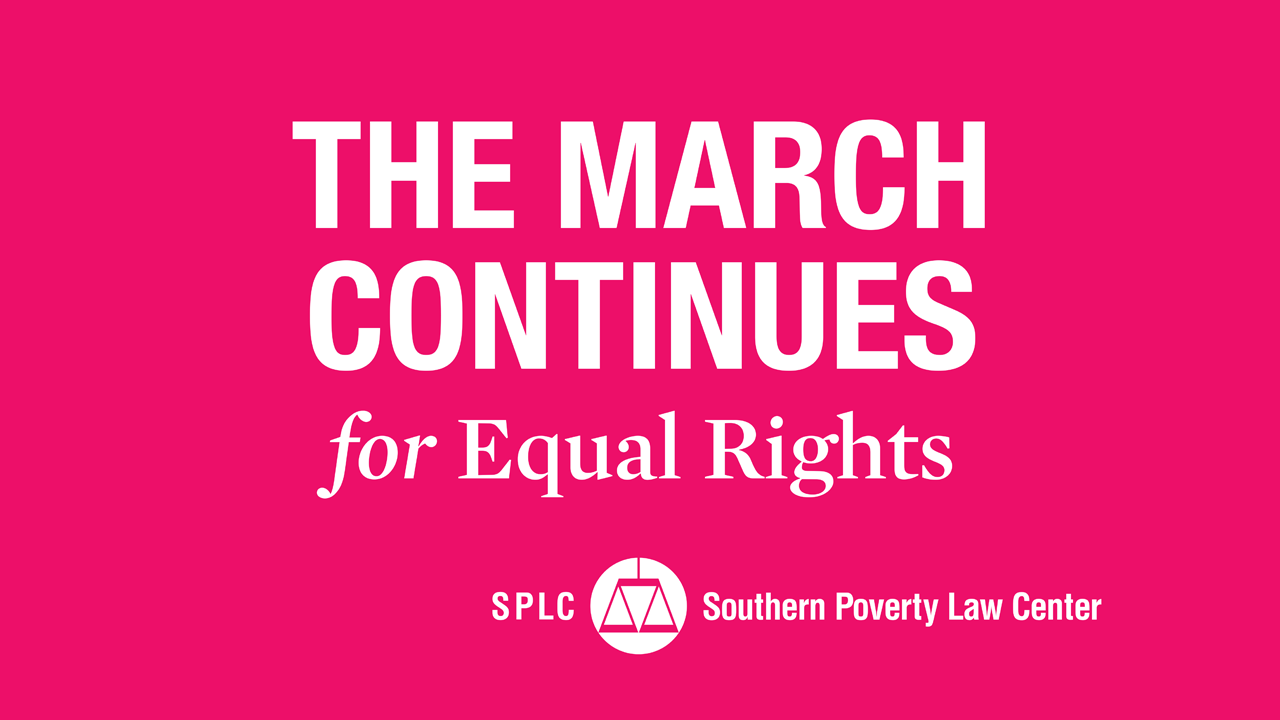More than 200,000 people are poised to converge on Washington, D.C., this weekend for the Women’s March on Washington. The brainchild of a retired lawyer in Hawaii, the march has galvanized women across the country who looked to organizers to make the event truly represent all of them.
As an official partner of the march, the SPLC stands in solidarity with its organizers’ mission to bring together communities “insulted, demonized and threatened by the rhetoric of the past election cycle.” We encourage all people to participate in the march on Washington or in one of the nearly 700 sister marches being held across the United States and the world.
Here’s a short look back at previous women’s marches in the United States that have struggled on the question of inclusivity.
Woman Suffrage Parade, March 3, 1913
Perhaps the most famous of these is the 1913 Woman Suffrage Parade. On the eve of President Woodrow Wilson’s inauguration, 5,000 women marched to protest the exclusion of women from the “political organization of society.”
The march was organized and led by suffragists who were split on the question of whether to include a delegation of black women from the NAACP.
Their solution was to arrange the parade so that white women marched first, then men, and finally, at the back of the parade, black women.
But many women – including the famous civil rights activist Ida B. Wells – refused to comply. Some members of the delegations from the NAACP and Howard University’s newly established Alpha Chapter of the Delta Sigma Theta sorority splintered off, sending their members to walk with state and occupational groups, rather than at the back as ordered.
Women’s Strike for Equality, August 26, 1970
When women marched on Washington almost 60 years later to demand equal pay and greater political power, they did so in an ostensibly more inclusive environment.
The Women’s Strike for Equality was organized by the National Organization for Women, then under the leadership of Aileen Hernandez, a longtime civil rights activist and the first woman to serve on the Equal Employment Opportunity Commission.
Yet at the time of the march, the media credited Betty Friedan, who had founded NOW four years earlier, with the organization and eventual success of the 1970 march.
NOW attributes the original idea for the Women’s Strike for Equality to Betty Friedan but the logistics of executing it to Hernandez. Historical accounts have continued, however, to write Hernandez, who is black, out of the story.
Under Hernandez’s leadership, the Woman’s Strike for Equality ultimately drew more than 20,000 women in what was, at the time, the largest such gathering of women ever.
Million Woman March, October 25, 1997
The Million Woman March, on the other hand, has continued to gain fame precisely because of what and who it took to organize it.
Almost a year in the making, the march was advertised largely through word of mouth and flyers. No national organizations officially lent their expertise or their resources to it. And the activist who chaired the march, Dr. Phile Chionesu, was a small business owner rather than a professional social justice advocate.
It surprised many that the march drew at least 500,000 people from around the country to Philadelphia. The Million Woman March’s mission – to call attention to the marginalization of African-American women – featured speeches by Winnie Madikizela-Mandela and Congresswoman Maxine Waters.
2017
This year’s march was conceived as a reaction to the election of President Trump in November. What started as a post on Facebook ignited a surge of support.
It was initially named the “Million Woman March on Washington.” But the name angered many who saw it as primarily a march for white woman who were appropriating the name of the 1997 African-American women’s march.
The name was quickly changed, and a diverse leadership group was created to plan to march, with the support of more than 400 non-profit partners, including the SPLC.
Participants in the march are hoping to shape the country’s future. Simply by being part of the first women’s march to prioritize a wider inclusivity, they may already be doing so.



